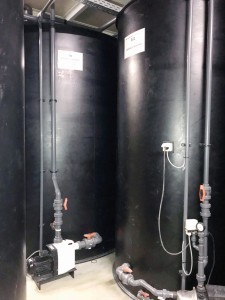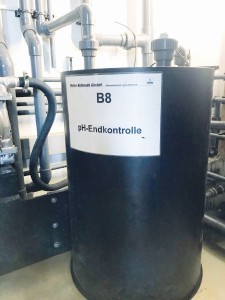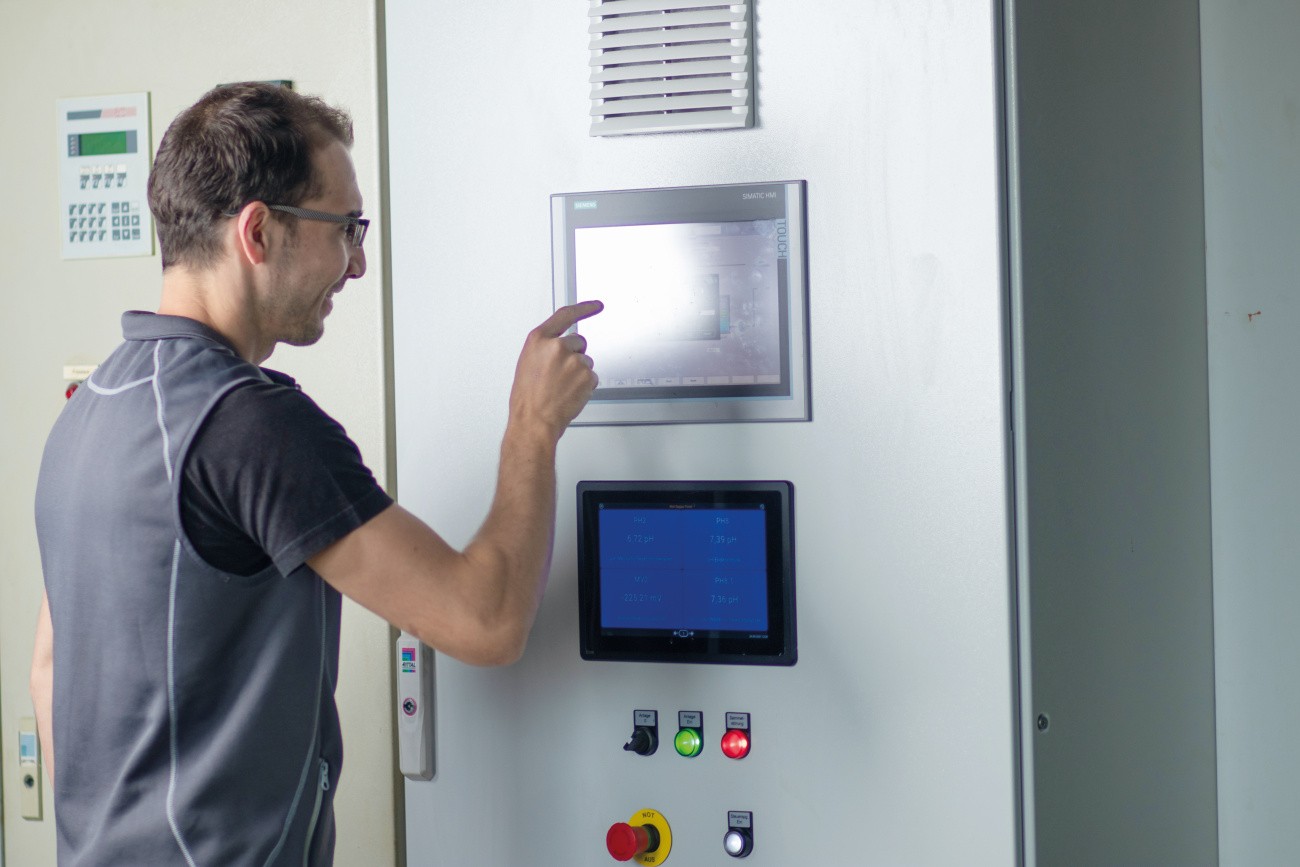Many branches of industry would be inconceivable without the use of water as a solvent - including PCB production. It is therefore becoming increasingly important to reduce the amount of waste water produced and to invest in treatment plants. Limit values to be adhered to are subject to constant review.
 Only around 3% of the water on earth is fresh water - a valuable resource and the basis for all life. The German Wastewater Ordinance (AbwV) is correspondingly strict, specifying the maximum load of wastewater that may be discharged into the sewer system. Industrial production facilities such as PCB production are required to comply with the limit values or, if possible, to fall below them. To this end, the water used in production must be pre-cleaned as effectively as possible so that the wastewater contains as few pollutants as possible before it is treated and returned to the cycle. For example, the copper content in the 2-hour mixed sample must not exceed 0.5 mg/l.
Only around 3% of the water on earth is fresh water - a valuable resource and the basis for all life. The German Wastewater Ordinance (AbwV) is correspondingly strict, specifying the maximum load of wastewater that may be discharged into the sewer system. Industrial production facilities such as PCB production are required to comply with the limit values or, if possible, to fall below them. To this end, the water used in production must be pre-cleaned as effectively as possible so that the wastewater contains as few pollutants as possible before it is treated and returned to the cycle. For example, the copper content in the 2-hour mixed sample must not exceed 0.5 mg/l.
A survey conducted by the German Electrical and Electronic Manufacturers' Association (ZVEI) back in 2010 produced clear results that are still valid today. The participants in the ZVEI survey reported an average of 396 liters of water consumption per square meter of manufactured PCB area. PCB manufacturing companies naturally consume a relatively large amount of water.
PCB production generates water contaminated with heavy metals, which the companies then have to clean. The residues tend to be toxic and must be removed from the water cycle. Precipitation is the most common method for separating the heavy metals from the used water or for pre-cleaning waste water. The heavy metals are made insoluble by adding a precipitating agent to the water - they are 'precipitated', whereby the neutralizing agents, such as caustic soda or milk of lime, are also the precipitating agents in this process.
Heavy metals are elements that exceed a density of 5 g/cm³. Most of them are harmful to human health. They must therefore be precipitated out of the waste water from production. By means of sulphide precipitation, some of the heavy metals can already be precipitated in acidic wastewater. According to the Chemie.de portal, this offers a major time and cost advantage, as several work steps can be carried out at the same time.
The group of heavy metals includes those elements that form poorly soluble sulphides with the separating agent, such as copper and zinc. This is where sulphide precipitation has a huge advantage over hydroxide precipitation. The residual metal values in the wastewater are several orders of magnitude (10,000 to 10 million times) lower. The heavy metals filtered out are then disposed of in an environmentally friendly manner or fed into the recycling cycle.
Continuous analysis of the waste water
 At Becker & Müller Schaltungsdruck GmbH, wastewater treatment was examined as part of the long-term environmental and investment strategy. The aim was not only to improve the recycling rate of the sludge, but also to reduce the amount of residue in the wastewater. The current investment was brought forward in order to anticipate a necessary replacement due to the service life of the old plant. From an environmental point of view, the company invested in a new wastewater treatment plant worth almost €400,000 from 'Walter Süßmuth GmbH'. As a long-standing partner, the company is well versed in its field. An individualized process for separating different water streams and reducing residues was specially approved by the authorities. As a result, metal residues in the water to be treated were reduced by thirty percent.
At Becker & Müller Schaltungsdruck GmbH, wastewater treatment was examined as part of the long-term environmental and investment strategy. The aim was not only to improve the recycling rate of the sludge, but also to reduce the amount of residue in the wastewater. The current investment was brought forward in order to anticipate a necessary replacement due to the service life of the old plant. From an environmental point of view, the company invested in a new wastewater treatment plant worth almost €400,000 from 'Walter Süßmuth GmbH'. As a long-standing partner, the company is well versed in its field. An individualized process for separating different water streams and reducing residues was specially approved by the authorities. As a result, metal residues in the water to be treated were reduced by thirty percent.
The waste water generated during prototype production is collected and up to 15,000 liters are temporarily stored before treatment. As soon as sufficient wastewater has been produced and the set filling quantity has been reached, the storage tank is pumped into the reaction tank where it is treated using various program sequences depending on the wastewater's contents.
After the sedimentation time, the treated wastewater is fed into the clear water tank. The remaining so-called thin sludge is additionally dewatered via the filter press and the water is then also fed into the clear water tank. The clear water is then further cleaned of smaller suspended particles using a multi-layer filter and, after a final check, is discharged into the sewage system. The pH value is continuously measured during this process.
The system values are constantly monitored by the employees. The 'rescue value', an indicator of the remaining metal in the wastewater, is also measured regularly using a spectrophotometer for water analysis. In addition, the values are checked twice a year by an independent laboratory. At 0.1 mg/l copper, the wastewater at Becker & Müller is well below the required limit of 0.5 mg/l.
 Automated processes, simple control, analysis, process monitoring and measured values increase the economic benefits of the wastewater treatment plant
Automated processes, simple control, analysis, process monitoring and measured values increase the economic benefits of the wastewater treatment plant
At Becker & Müller, the latest investment fits in with the long-term environmental strategy. Flushing systems with four cascades instead of the prescribed three have long been used in new wet systems. This improves the amount of water and residue in prototype production. The current project has further improved the recycling of sludge and further reduced water consumption and the amount of waste water per m² of PCB area. With the largely automated Süßmuth system, the time required for water treatment and system operation has also been greatly reduced, water consumption improved and the recycling rate increased.


